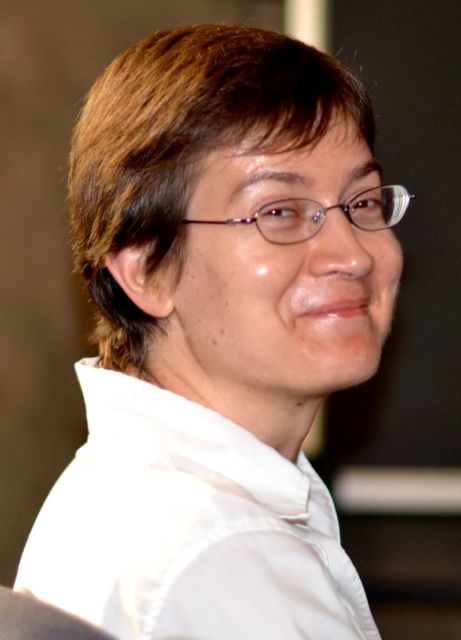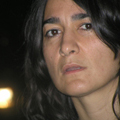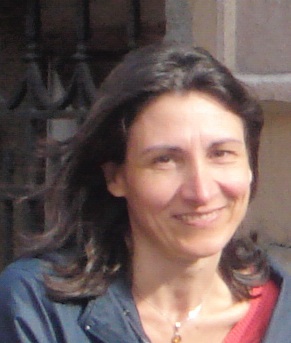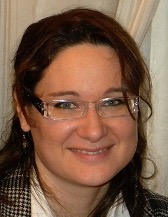Studying at the University of Verona
Here you can find information on the organisational aspects of the Programme, lecture timetables, learning activities and useful contact details for your time at the University, from enrolment to graduation.
Academic calendar
The academic calendar shows the deadlines and scheduled events that are relevant to students, teaching and technical-administrative staff of the University. Public holidays and University closures are also indicated. The academic year normally begins on 1 October each year and ends on 30 September of the following year.
Course calendar
The Academic Calendar sets out the degree programme lecture and exam timetables, as well as the relevant university closure dates..
| Period | From | To |
|---|---|---|
| I semestre | Oct 1, 2018 | Jan 31, 2019 |
| II semestre | Mar 4, 2019 | Jun 14, 2019 |
| Session | From | To |
|---|---|---|
| Sessione invernale d'esame | Feb 1, 2019 | Feb 28, 2019 |
| Sessione estiva d'esame | Jun 17, 2019 | Jul 31, 2019 |
| Sessione autunnale d'esame | Sep 2, 2019 | Sep 30, 2019 |
| Session | From | To |
|---|---|---|
| Sessione Estiva | Jul 17, 2019 | Jul 17, 2019 |
| Sessione Autunnale | Nov 20, 2019 | Nov 20, 2019 |
| Sessione Invernale | Mar 17, 2020 | Mar 17, 2020 |
| Period | From | To |
|---|---|---|
| Sospensione dell'attività didattica | Nov 2, 2018 | Nov 3, 2018 |
| Vacanze di Natale | Dec 24, 2018 | Jan 6, 2019 |
| Vacanze di Pasqua | Apr 19, 2019 | Apr 28, 2019 |
| Festa del Santo Patrono | May 21, 2019 | May 21, 2019 |
| Vacanze estive | Aug 5, 2019 | Aug 18, 2019 |
Exam calendar
Exam dates and rounds are managed by the relevant Science and Engineering Teaching and Student Services Unit.
To view all the exam sessions available, please use the Exam dashboard on ESSE3.
If you forgot your login details or have problems logging in, please contact the relevant IT HelpDesk, or check the login details recovery web page.
Academic staff
 maurizio.boscaini@univr.it
maurizio.boscaini@univr.it
 federico.busato@univr.it
federico.busato@univr.it
 claudio.tomazzoli@univr.it
claudio.tomazzoli@univr.it
Ugolini Simone
 simone.ugolini@univr.it
simone.ugolini@univr.it

Zoppello Marta
Study Plan
The Study Plan includes all modules, teaching and learning activities that each student will need to undertake during their time at the University.
Please select your Study Plan based on your enrollment year.
1° Year
| Modules | Credits | TAF | SSD |
|---|
Mathematical analysis 1
Computer Architecture
2° Year activated in the A.Y. 2019/2020
| Modules | Credits | TAF | SSD |
|---|
3° Year activated in the A.Y. 2020/2021
| Modules | Credits | TAF | SSD |
|---|
1 module to be chosen among the following| Modules | Credits | TAF | SSD |
|---|
Mathematical analysis 1
Computer Architecture
| Modules | Credits | TAF | SSD |
|---|
| Modules | Credits | TAF | SSD |
|---|
1 module to be chosen among the followingLegend | Type of training activity (TTA)
TAF (Type of Educational Activity) All courses and activities are classified into different types of educational activities, indicated by a letter.
Physics 1 (2018/2019)
Teaching code
4S00038
Teacher
Coordinator
Credits
6
Language
Italian
Scientific Disciplinary Sector (SSD)
FIS/01 - EXPERIMENTAL PHYSICS
Period
II semestre dal Mar 4, 2019 al Jun 14, 2019.
Learning outcomes
The course aims to provide students with an introduction to the experimental method and the basics of classical mechanics and thermodynamics.
Upon completion of the course:
students will be able to demonstrate knowledge and understanding of the laws of classical mechanics and thermodynamics;
students will be able to apply the acquired knowledge and understanding skills to solve problems of mechanics and thermodynamics;
students will have the capability to apply the fundamental concepts of classical mechanics and thermodynamics to the resolution of practical problems that they will meet during forthcoming studies;
students will develop the skills required to continue the studies in an autonomous way in those disciplines pertaining to the graduation in Computer Science that require the application and knowledge of the laws of Physics;
Program
1- Physics and measurement. Standards of lenght, mass and time. Dimensional analysis, Conversion of units. Vector and scalar quantities. Components of a vector and unit vectors. Properties of vectors. The scalar and vector products of two vectors.
2- Motion in one dimension. Position, velocity and speed. Particle under constant velocity. Acceleration. Motion diagrams. Particle under constant acceleration. Freely falling object. Motion in two dimensions. Position velocity and acceleration vectors. Two dimensional motion with constant acceleration. Projectile motion. Particle in uniform circular motion. Tangential and radial acceleration. Relative velocity and relative acceleration.
3- The Laws of Motion: The concept of force. Newton’s first law and inertial frames. Mass. Newton’s second law. The gravitational and electrostatic forces. The gravitational force and weight. Newton’s third law. Forces of friction. Newton’s second law for a particle under uniform circular motion. Non uniform circular motion. Motion in accelerated frames. Motion in the presence of resistive forces.
4- Energy and work. Work done by a constant force. Work done by a varying force. Kinetic energy and the work-kinetic energy theorem. Potential energy. Conservative and non conservative forces. Relationship between conservative forces and potential energy. Energy diagrams and equilibrium of a system. Conservation of energy for a non isolated system and for an isolated system. Situations involving kinetic friction. Changes in mechanical energy for non conservative forces. Power.
5- Linear momentum and collisions. Linear momentum and its conservation. Collisions in one dimension. Collisions in two dimensions. The center of mass. Systems of many particles. Rocket propulsion.
6- Rotation of a rigid object about a fixed axis. Angular position, velocity and acceleration. Rigid object under constant angular acceleration. Angular and translational quantities. Rotational kinetic energy. Moments of Inertia. Torque. Rigid object under a net torque. Energy consideration in rotational motion. Angular momentum. Angular momentum for a rigid object. Angular momentum for an isolated system.
7- Newton’s law of universal gravitation. Free-fall acceleration and the gravitational force. Kepler’s laws and the motion of planets. The gravitational field. Gravitational potential energy.
8- Fluid Mechanics. Pressure. Variation of pressure with depth. Pressure measurements. Archimede’s principle. Fluid dynamics. Bernoulli’s equation.
9- Oscillatory motion. Motion of an object attached to a spring. Particle in simple harmonic motion. Energy of the simple harmonic oscillator. Comparing simple harmonic motion with uniform circular motion. The pendulum. Damped and forced oscillations.
10- Thermodynamics. Temperature and the zeroth law of thermodynamics. Thermometers and the Celsius temperature scale. The constant-volume gas thermometer and the absolute temperature scale. Thermal expansion. Macroscopic description of an ideal gas. Heat and internal energy. Specific heat and calorimetry. Work and heat in thermodynamic processes. The first law of Thermodynamics. Heat engines and the second law of thermodynamics. Reversible and irreversible processes. The Carnot engine. Entropy.
| Author | Title | Publishing house | Year | ISBN | Notes |
|---|---|---|---|---|---|
| Serway Jewett | Fisica per Scienze ed Ingegneria volume primo (Edizione 5) | EdiSES srl | 2015 | 978-88-7959-834-7 |
Examination Methods
Written test consisting of exercises on the topics covered during the course and some multiple choice questions. The witten test can be followed by an oral exam (optional), which aims to acquire, if necessary, further elements for evaluation of students and eventually clarify aspects of the written test.
Type D and Type F activities
Modules not yet included
Career prospects
Module/Programme news
News for students
There you will find information, resources and services useful during your time at the University (Student’s exam record, your study plan on ESSE3, Distance Learning courses, university email account, office forms, administrative procedures, etc.). You can log into MyUnivr with your GIA login details: only in this way will you be able to receive notification of all the notices from your teachers and your secretariat via email and also via the Univr app.
Graduation
List of thesis proposals
| theses proposals | Research area |
|---|---|
| Analisi e percezione dei segnali biometrici per l'interazione con robot | AI, Robotics & Automatic Control - AI, Robotics & Automatic Control |
| Integrazione del simulatore del robot Nao con Oculus Rift | AI, Robotics & Automatic Control - AI, Robotics & Automatic Control |
| Domain Adaptation | Computer Science and Informatics: Informatics and information systems, computer science, scientific computing, intelligent systems - Computer graphics, computer vision, multi media, computer games |
| Domain Adaptation | Computer Science and Informatics: Informatics and information systems, computer science, scientific computing, intelligent systems - Machine learning, statistical data processing and applications using signal processing (e.g. speech, image, video) |
| BS or MS theses in automated reasoning | Computing Methodologies - ARTIFICIAL INTELLIGENCE |
| Domain Adaptation | Computing Methodologies - IMAGE PROCESSING AND COMPUTER VISION |
| Domain Adaptation | Computing methodologies - Machine learning |
| Dati geografici | Information Systems - INFORMATION SYSTEMS APPLICATIONS |
| Analisi e percezione dei segnali biometrici per l'interazione con robot | Robotics - Robotics |
| Integrazione del simulatore del robot Nao con Oculus Rift | Robotics - Robotics |
| BS or MS theses in automated reasoning | Theory of computation - Logic |
| BS or MS theses in automated reasoning | Theory of computation - Semantics and reasoning |
| Proposte di tesi/collaborazione/stage in Intelligenza Artificiale Applicata | Various topics |
| Proposte di Tesi/Stage/Progetto nell'ambito dell'analisi dei dati | Various topics |
Attendance modes and venues
As stated in the Teaching Regulations, attendance at the course of study is not mandatory.
Part-time enrolment is permitted. Find out more on the Part-time enrolment possibilities page.
The course's teaching activities take place in the Science and Engineering area, which consists of the buildings of Ca‘ Vignal 1, Ca’ Vignal 2, Ca' Vignal 3 and Piramide, located in the Borgo Roma campus.
Lectures are held in the classrooms of Ca‘ Vignal 1, Ca’ Vignal 2 and Ca' Vignal 3, while practical exercises take place in the teaching laboratories dedicated to the various activities.

 +39 045 802 7980
+39 045 802 7980





























